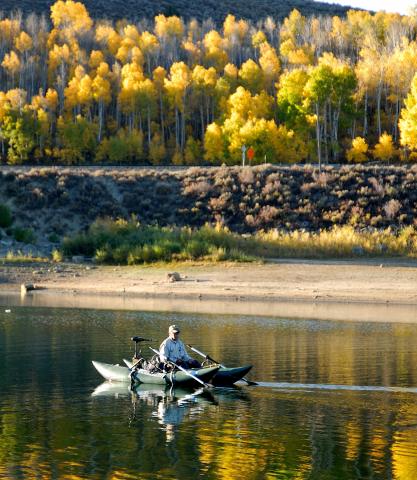
Northern and Central Utah
A road trip for June suckers
What: The June sucker is an endangered fish found only in Utah Lake, but it isn’t always spawned or bred there. To give young June suckers a better chance at survival, DWR biologists breed and grow many of the fish at sites outside the lake. Then, when the fish are large enough to evade predators, the biologists collect and release them in Utah Lake. In early October, biologists will collect up to 10,000 young June suckers raised in Utah’s northwest desert and drive them to Utah Lake for release. Reporters and photographers are invited to visit both the collection and release sites and to interview the project biologists.
When: The bulk of the collection work will happen the morning of Oct. 3. The hatchery truck will arrive between 12 and 1 p.m. to pick up the fish for their ride to Utah Lake.
Where: The collection process will occur at the Rosebud Ponds (western Box Elder County). The fish will be released in Utah Lake.
Contact: Chance Broderius, 385-315-4676
=======================
Central Utah
High school students releasing partridges and conducting wildlife study
What: Next week, a Wasatch High School class will take an unusual field trip. The students and their teacher will visit a nearby wildlife management area (WMA) to release approximately 130 chukar partridges. They raised the birds at school and plan to study their survival on the WMA. They’re going to attach leg bands to the birds and place a camera at a guzzler (water storage structure) on the WMA. Reporters and photographers are invited to join the students during the release, obtain photos and footage of the birds and learn more about this fun, hands-on wildlife project.
When: Thursday, Sept. 28
Where: The Wallsburg Wildlife Management Area (in Wasatch County, near the town of Wallsburg)
======================
Improving habitat for mule deer, sage grouse and other wildlife
What: Fall is habitat-restoration season in Utah. Busy crews are heading into the field to tackle a variety of interesting projects that will improve habitat for mule deer, sage grouse and other Utah wildlife. Here are four types of projects happening in central Utah over the next couple of months:
Reseeding fire-damaged areas — Utah has had its fair share of wildfires this summer. The DWR will work with partners to reseed and restore six fire-damaged areas in central Utah, including acreage burned in the Tank Hollow Fire.
Cheatgrass spraying — The DWR will spray 16,000 acres of cheatgrass in Tooele County, with the goal of removing it from the landscape. Cheatgrass has limited nutritional value for wildlife and poses a huge wildfire hazard. After the cheatgrass dies, the DWR will reseed the area with vegetation that benefits wildlife.
Using a bullhog to remove vegetation — When it comes to wildlife habitat, not all vegetation is of equal value. In fact, certain types of plants (like pinyon pine and Utah juniper) crowd out more beneficial plants like sagebrush. The DWR will use a large machine called a bullhog to shred the pinyon and juniper trees so more sagebrush can grow. See a bullhog in action at http://j.mp/1TDQY81
Building artificial beaver dams to help sage grouse — DWR habitat crews will build artificial beaver dams in a creek in the Vernon area (Tooele County). The goal is to raise the water table in the area and create wet-meadow habitat that will benefit a local population of greater sage grouse.